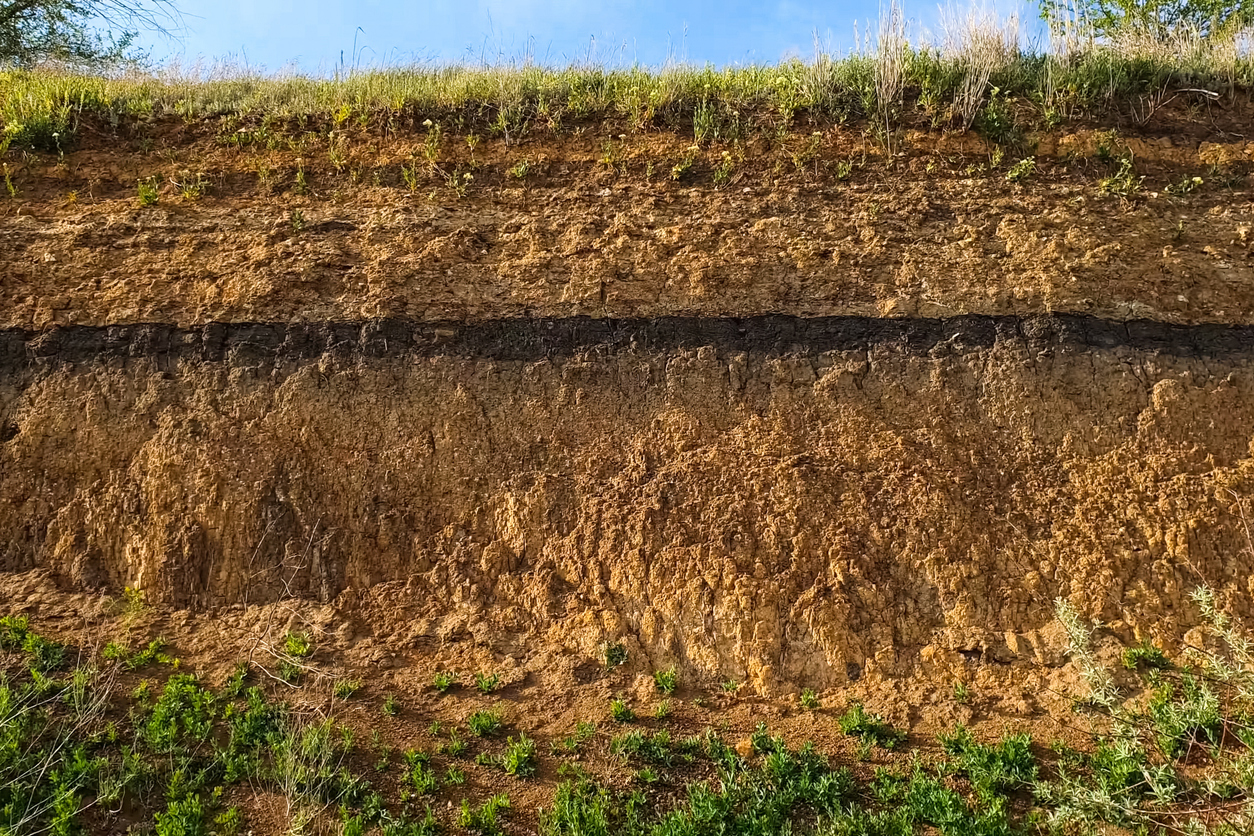
Soil slice in a quarry
Diverse Soil
Grade 6-8
This lesson focuses on two main ideas:
- Characteristics of different types of soil and their layers.
- Advantages and disadvantages of various soil types for farmers.
Procedure
INTRODUCTION (15 minutes)
Read the introduction to students and review new vocabulary. Students will watch the "Maryland Farm and Harvest - Episode 1004 - Diverse Soil ” video. After the video, discuss the essential questions and thinking questions aligned to the topic and video. Discuss with students the career connections related to soil.
EXTENSION (15-30 minutes)
Complete extension activities with students, as you deem appropriate.
ASSESSMENT (15 minutes)
Have students apply their newfound knowledge by completing a Summative CER on the lesson using evidence from the video and activities as support.
REFLECTION (10 minutes)
Have students complete a reflection.
Standards
S-ESS3-1 Earth and Human Activity
Construct a scientific explanation based on evidence for how the uneven distributions of Earth's mineral, energy, and groundwater resources are the result of past and current geoscience processes.
- Science and Engineering Practices
Constructing Explanations and Designing Solutions
Constructing explanations and designing solutions in 6–8 builds on K–5 experiences and progresses to include constructing explanations and designing solutions supported by multiple sources of evidence consistent with scientific ideas, principles, and theories.- Construct a scientific explanation based on valid and reliable evidence obtained from sources (including the students’ own experiments) and the assumption that theories and laws that describe the natural world operate today as they did in the past and will continue to do so in the future.
- Disciplinary Core Ideas
ESS3.A: Natural Resources
- Humans depend on Earth’s land, ocean, atmosphere, and biosphere for many different resources. Minerals, fresh water, and biosphere resources are limited, and many are not renewable or replaceable over human lifetimes. These resources are distributed unevenly around the planet as a result of past geologic processes.
- Crosscutting Concepts
Cause and Effect
- Cause and effect relationships may be used to predict phenomena in natural or designed systems.
Standard 3
Environmental Impact of Human Activity:
Environmentally literate students construct and apply understanding of the environmental impact of human activities on Earth’s systems and resources.
Summative CER
Option 1:
Construct an argument regarding best practices farmers should consider when growing crops using different soil types. Use evidence and reasoning from the videos and activities to support your response.
Option 2:
Develop a scientific explanation about why we see such a variety of soil across different regions in Maryland. Use evidence and reasoning from the videos and activities to support your explanation.
Reflection Questions
- What are the advantages and disadvantages of various types of soil for farmers?
- How can studying soil aid farmers in their agricultural practices?
Summative CER Rubric
| Scoring Rubric Components | No Response Score Point 0 |
Not There Yet Score Point 0.5 |
Beginning To Score Point 0.75 |
Yes Score Point 1.0 |
|---|---|---|---|---|
| CLAIM | The claim is missing. | The claim is incorrect or irrelevant. | The claim partially takes a position on the topic or issue addressed within the prompt. | The claim takes an appropriate position on the topic or issue addressed within the prompt. |
| EVIDENCE | There is no type of evidence in the response. | The evidence is irrelevant or does not support the claim. | The evidence partially supports the claim and demonstrates some understanding of the topic or text, using appropriate sources. | The evidence supports the claim and demonstrates a strong understanding of the topic or text, using appropriate sources. |
| REASONING | There is no use of words, phrases, and clauses to create cohesion and to clarify the relationship between the claim and evidence. | Use of words, phrases and clauses fail to show or explain any relationship between the claim and evidence. | Scientific words, phrases, and clauses used lack cohesion but partially clarify the relationship between the claim and evidence. | Appropriate scientific words, phrases, and clauses are used to create cohesion and to clarify the relationship between the claim and evidence. |


